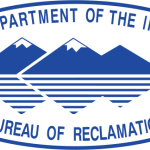- Branche: Government
- Number of terms: 15655
- Number of blossaries: 0
- Company Profile:
A U.S. Department of the Interior agency that oversees water resource management incuding the oversight and operation of numerous diversion, delivery, and storage projects the agency has built throughout the western United States for irrigation, water supply, and attendant hydroelectric power ...
U.S. Fish and Wildlife Service (FWS) or National Marine Fisheries Service (NMFS) opinion that an action is likely to jeopardize the continued existence of a listed species or result in the destruction or adverse modification of critical habitat. The opinion includes reasonable and prudent alternatives, if any. See no jeopardy opinion.
Industry:Engineering
An existing hypothetical avenue of concentrated seepage. The descriptor "concentrated" implies sufficient energy to carry/move material and erode. Energy varies with material type, construction methods, geology, etc., since an anomaly may result in higher velocities adjacent to materials than more uniform flow through a given material.
Industry:Engineering
Cycle of water movement from atmosphere to Earth by precipitation and its return to the atmosphere by interception, evaporation, runoff, infiltration, percolation, storage, and transpiration. The natural recycling process powered by the sun that causes water to evaporate into the atmosphere, condense and return to earth as precipitation.
Industry:Engineering
A supplement to the public alert system; a method for alerting people in areas not covered by the primary system or if the primary system fails. Route alerting is accomplished by emergency personnel in vehicles traveling along assigned roads and delivering emergency instructions with public address systems or by door-to-door notification.
Industry:Engineering
The highest acceptable water surface elevation with all factors affecting the safety of the structure considered. It is the highest water surface elevation resulting from a computed routing of the inflow design flood through the reservoir under established operating criteria. This surface elevation is also the top of the surcharge capacity.
Industry:Engineering
The highest acceptable water surface elevation with all factors affecting the safety of the structure considered. It is the highest water surface elevation resulting from a computed routing of the inflow design flood through the reservoir under established operating criteria. This surface elevation is also the top of the surcharge capacity.
Industry:Engineering
The reservoir capacity provided for use in passing the inflow design flood through the reservoir. It is the reservoir capacity between the maximum water surface elevation and the highest of the following elevations: top of exclusive flood control capacity, top of joint use capacity, or top of active conservation capacity. Temporary storage.
Industry:Engineering
The reservoir capacity provided for use in passing the inflow design flood through the reservoir. It is the reservoir capacity between the maximum water surface elevation and the highest of the following elevations: top of exclusive flood control capacity, top of joint use capacity, or top of active conservation capacity. Temporary storage.
Industry:Engineering
Estimate of the largest amount of a chemical to which a person can be exposed on a daily basis that is not anticipated to result in adverse effects (usually expressed in mg/kg/day). The daily exposure level which, during an entire lifetime of a human, appears to be without appreciable risk on the basis of all facts known at the time. See RFD.
Industry:Engineering
The ratio of inertial forces to gravitational forces in flow. It is also the ratio of the flow velocity to the velocity of a small gravity wave in the flow. When the Froude number is less than one, the flow is tranquil. When the Froude number is greater than one, the flow is rapid. When the Froude number is equal to one, the flow is critical.
Industry:Engineering
